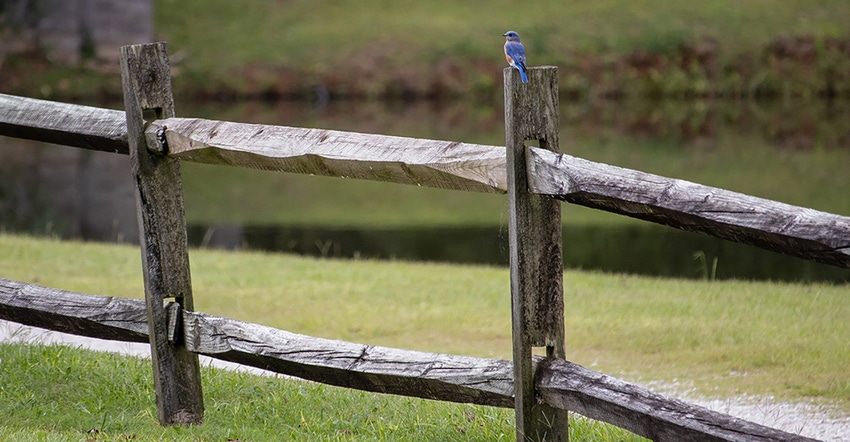October 21, 2020

According to a recent study co-authored by an Auburn University researcher and published in the journal, Nature Sustainability, a popular pesticide is causing bird species to decline in the United States.
“There have long been concerns that the use of neonicotinoids—a group of synthetic insecticides that have gained popularity in seed coating, foliage spray and soil drenches in agricultural and residential areas in the past 25 years—may harm non-targeted species such as pollinators, birds and mammals, including perhaps even humans,” said Ruiqing Miao, assistant professor in the College of Agriculture’s Department of Agricultural Economics and Rural Sociology.
Earlier studies focusing on the impact of neonicotinoid use on birds are based mainly on evidence from laboratory experiments or focused on other countries, Miao said. This most recent study fills the gap, as it is a national-scale analysis based on historical data observed in the United States.
Based on county-level pesticide-use data and the observation-route level bird count data from 2008-14, all obtained from the U.S. Geological Survey, the study statistically analyzes nearly 15,000 observations of bird-pesticide pairs across the contiguous U.S. to examine the causal relationship between neonicotinoid use and decline in bird biodiversity.
The study found that, on average, a 100-kilogram increase in neonicotinoid use in a county will decrease grassland bird population in that county by 2.2% and decrease non-grassland bird population by about 1.4%, Miao said.
Species richness in a county, measured by the number of bird species, will be decreased by about 0.5% for both grassland and non-grassland birds for every 100-kilogram increase in neonicotinoid use in the county, he said. The same amount of increase in neonicotinoid use will cause a 0.4% decrease in species evenness (a measure of the distributional evenness of population across various species) for grassland birds.
When birds eat the pesticide-coated seeds or insects that have pollinated neonicotinoid-treated plants, the chemicals can harm bird development. Over time, they decrease birds’ abilities to reproduce,
“For non-grassland birds, however, the negative impact on spices evenness is not statistically significant,” Miao said. “Similar, but slightly smaller, negative effects are found for populations, species richness and species evenness of insectivorous birds and non-insectivorous birds.”
The study further quantifies the overall impact of neonicotinoid uses over the period 2008-14 in the United States, he said. It shows that over this period, on average, the neonicotinoid uses cause a 4% and 3% annual reduction in grassland bird population and insectivorous bird population, respectively.
For non-grassland bird and non-insectivorous bird populations, the annual reduction caused by neonicotinoid uses in the period is about 2%.
When the dynamic effect of bird population is taken into account (i.e., reduction in bird population in a year will further reduce the reproductive capacity of the population in the next year), then the annual reduction impact caused by the neonicotinoid uses from 2008-14 will be much higher, reaching 12% and 5% for grassland birds and insectivorous birds, respectively.
Geographically, the negative impact on bird populations occurs mainly in the Midwest, southern California and Upper Great Plains regions of the United States.
The study also compares the impact of neonicotinoids and that of non-neonicotinoids, Miao said. “The negative effect of a 100-kilogram increase in neonicotinoid use is about 40 times larger than that of the same amount increase in non-neonicotinoid use."
The study also examines the impact of cropland and developed land on bird biodiversity. It finds that a 1% increase in cropland acreage in a county tends to reduce 1.4% to 3.5% of grassland bird populations and 1.7% to 3.2% of insectivorous bird population.
“The impact of cropland expansion on non-grassland birds and non-insectivorous birds is smaller,” Miao said. “Developed land is found to have negative impact on bird biodiversity as well, especially for non-grassland birds.”
The study, he said, offers empirical evidence that using a neonicotinoid leads to a decline in bird biodiversity, particularly for grassland birds, lending support to current effort of the U.S. Environmental Protection Agency to re-evaluate the uses of neonicotinoids.
“For agricultural chemical producers and farmers, this indicates that the search for more sustainable means of pest control is still unsettled,” Miao said. “About a quarter of a century ago, neonicotinoids emerged as a new class of pesticides with less toxicity to non-targeted species, and they replaced some of the earlier pesticides. One would expect that similar ‘creative destructive forces’ should lead to more sustainable means of insect control.”
Source: Auburn University, which is solely responsible for the information provided and is wholly owned by the source. Informa Business Media and all its subsidiaries are not responsible for any of the content contained in this information asset.
About the Author(s)
You May Also Like




